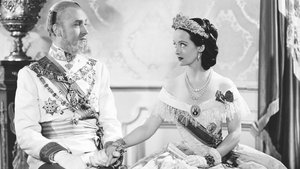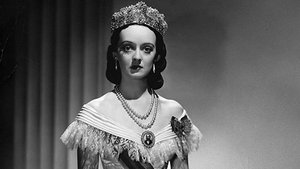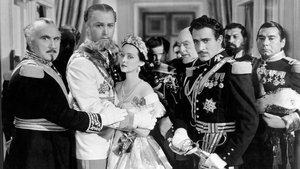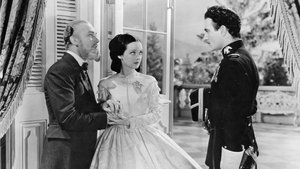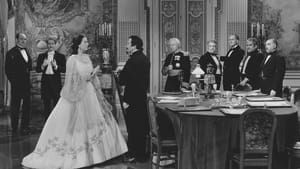Video Sources 0 Views
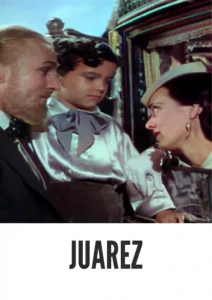
Synopsis
Passion, Power, and Politics: Juarez (1939) in Stunning Color

Step back in time with Juarez, a sweeping historical drama from 1939, now beautifully colorized for a viewing experience that brings the past to life. This film explores the tumultuous era of Mexican history, focusing on the conflict between President Benito Juarez and Emperor Maximilian. Perfect for history buffs and fans of classic cinema, this HD download offers a vivid portrayal of a nation’s struggle for freedom and justice. Also known as The Mad Empress.
Juarez Storyline: A Nation Divided
Juarez delves into the heart of 19th-century Mexico, where President Benito Juarez leads a rebellion against the French-backed Emperor Maximilian. The film chronicles the political intrigue, military battles, and personal sacrifices that defined this pivotal period in Mexican history.As Maximilian, blinded by ambition and manipulated by European powers, attempts to solidify his rule, Juarez rallies his forces to defend the principles of democracy and self-determination. Caught in the middle is Empress Carlota, who grapples with her conscience as she witnesses the suffering of the Mexican people. The film culminates in a dramatic showdown between Juarez and Maximilian, with the fate of a nation hanging in the balance. Ultimately, Juarez is a powerful and moving story about courage, leadership, and the enduring struggle for freedom.
Movie Cast
The film features a stellar cast of actors who bring this historical epic to life:
- Paul Muni as Benito Juarez
- Bette Davis as Empress Carlota
- Brian Aherne as Emperor Maximilian
- John Garfield as Porfirio Diaz
- Gale Sondergaard as Empress Eugenie
Movie Genre
Juarez falls into the genre of historical drama, with elements of political intrigue and epic scope. Its sweeping narrative and grand scale make it a captivating and immersive film experience.
Historical Context: Hollywood and Historical Epics
Released in 1939, Juarez reflects Hollywood’s fascination with historical events and its tendency to create grand-scale epics that dramatize the past. The film was produced during a period when Hollywood studios had the resources and ambition to tackle complex historical subjects and bring them to a wide audience. While Juarez may take certain liberties with historical accuracy, it offers valuable insights into the cultural and political attitudes of its time.
Colorization Details
This colorized version of Juarez has been meticulously restored using modern digital techniques, enhancing the visual appeal while preserving the film’s original grandeur and emotional impact. The colorization process involved carefully analyzing the grayscale tones of the original black and white footage and assigning appropriate colors to each scene. While the specific software used remains proprietary, the techniques employed included advanced algorithms for color palette selection and image enhancement. This painstaking process brings new life to the characters and settings, making the story even more engaging for modern audiences. While some may debate the merits of colorizing classic films, it introduces these films to a broader audience, ensuring their legacy for future generations.
Technical Details
- Director: William Dieterle
- Screenplay: Aeneas MacKenzie, Wolfgang Reinhardt, Philip Stevenson
- Based on: Juarez and Maximilian a play by Franz Werfel and the novel The Phantom Crown by Bertita Harding
- Cinematography: Tony Gaudio
- Edited by: Warren Low
- Production Company: Warner Bros. Pictures
- Distributed by: Warner Bros. Pictures
- Runtime: 132 minutes
Technical Specifications
- Download Format: MP4
- Resolution: HD (1080p)
- Compatibility: Compatible with most devices, including smartphones, tablets, computers, and smart TVs.
Reviews and Critical Reception
Juarez (1939) is a grand and ambitious historical drama that explores the complex political landscape of 19th-century Mexico. While it may not be considered a masterpiece, it remains a fascinating and entertaining example of classic Hollywood filmmaking and a valuable piece for history enthusiasts. As a sweeping epic with strong performances and a compelling story, Juarez offers a unique perspective on a pivotal moment in Mexican history.
FAQs
- Q: What is Juarez about?
- A: Juarez is a historical drama about the conflict between President Benito Juarez and Emperor Maximilian in 19th-century Mexico.
- Q: Is Juarez (1939) a well-known historical film?
- A: Juarez is a notable example of classic Hollywood historical epics, offering a grand-scale portrayal of a pivotal moment in Mexican history.
- Q: Is this version of Juarez colorized?
- A: Yes, this version has been professionally colorized to enhance the viewing experience.
- Q: What makes Juarez interesting for history fans?
- A: Juarez offers valuable insights into the political intrigue, military battles, and personal sacrifices that defined 19th-century Mexico.
- Q: What is the download format?
- A: The download format is MP4, which is compatible with most devices.
- Q: What resolution is the download?
- A: The resolution is HD (1080p), providing a high-quality viewing experience.
Download Now in HD!
Watch Juarez Today!
